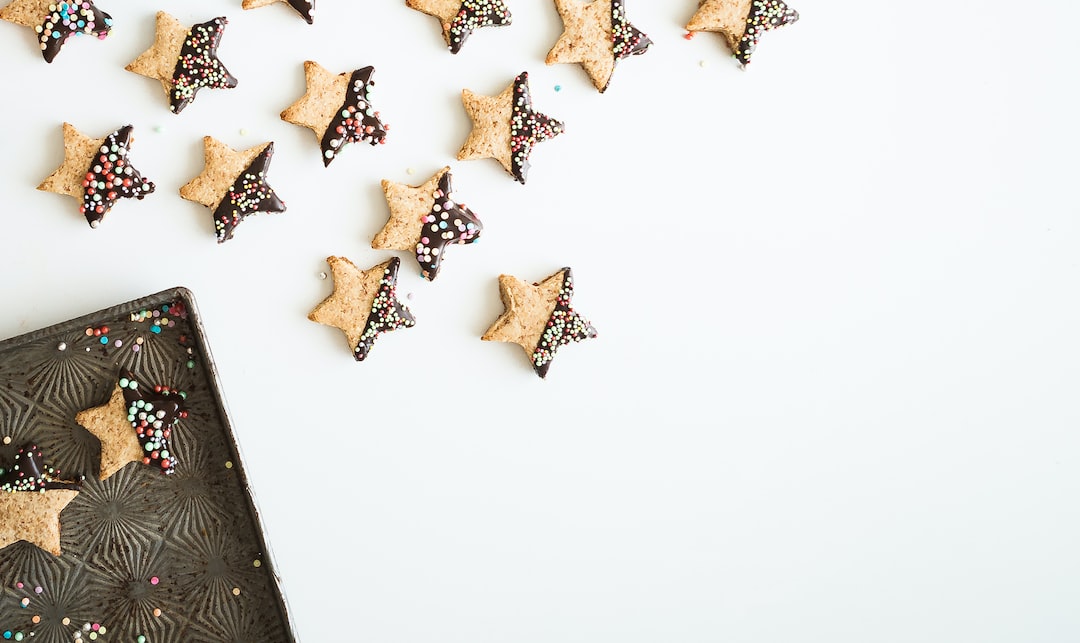Extend the Life of Your Poinsettia: Tips on What to Do After Christmas

The poinsettia, scientifically known as Euphorbia pulcherrima, is a vibrant and festive plant that has become synonymous with the holiday season. Native to Mexico, the poinsettia was first introduced to the United States in the early 19th century by Joel Poinsett, the U.S. ambassador to Mexico. Poinsett was captivated by the plant’s vibrant red leaves, which he saw during a visit to Mexico and brought back to his home in South Carolina.
Since then, the poinsettia has become a staple of Christmas decorations and gift-giving. Its bright red leaves, which are often mistaken for flowers, symbolize the joy and warmth of the holiday season. In addition to its striking appearance, the poinsettia is also popular because it can be easily cared for and maintained throughout the holiday season.
Key Takeaways
- Poinsettias are popular during Christmas due to their bright red and green colors.
- After the holidays, poinsettias can be kept as houseplants and will continue to grow.
- Choosing the right location for your poinsettia is important for its health and growth.
- Proper watering and fertilizing techniques are crucial for keeping your poinsettia healthy.
- Pruning and pinching can help shape your poinsettia and promote bushier growth.
Understanding the Life Cycle of a Poinsettia: What Happens After the Holidays?
After the holiday season, many people wonder what to do with their poinsettias. Understanding the plant’s growth cycle can help ensure its long-term health and vitality. The poinsettia is a short-day plant, meaning that it requires long periods of darkness in order to bloom. In its natural habitat, this occurs during the winter months.
After the holidays, when the days begin to lengthen, the poinsettia will naturally start to lose its vibrant red leaves. This is a normal part of its growth cycle and should not cause concern. To keep your poinsettia healthy after the holidays, it is important to provide it with proper care and attention.
One key tip for keeping your poinsettia healthy after the holidays is to place it in a location where it will receive bright but indirect light. Direct sunlight can be too intense for the plant and may cause its leaves to burn. Additionally, it is important to keep the poinsettia in a warm and humid environment. Avoid placing it near drafts or cold windows, as this can cause the plant to become stressed and susceptible to disease.
Location, Location, Location: Choosing the Right Spot for Your Poinsettia
Choosing the right location for your poinsettia is crucial for its long-term health and vitality. Poinsettias thrive in bright but indirect light, so it is important to find a spot in your home that receives ample sunlight without exposing the plant to direct sunlight. Placing your poinsettia near a north or east-facing window is often ideal.
In addition to lighting conditions, temperature is also an important factor to consider when choosing a location for your poinsettia. Poinsettias prefer temperatures between 60-70 degrees Fahrenheit during the day and slightly cooler temperatures at night. Avoid placing your poinsettia near drafts or heating vents, as this can cause stress and damage to the plant.
Watering and Fertilizing: How to Keep Your Poinsettia Healthy and Happy
| Watering and Fertilizing Tips | Frequency | Amount |
|---|---|---|
| Watering | When the soil surface feels dry to the touch | Water until it drains out of the bottom of the pot |
| Fertilizing | Every 2-3 weeks | Use a balanced fertilizer with equal parts nitrogen, phosphorus, and potassium |
| Additional Tips | Avoid letting the plant sit in standing water and reduce watering during the winter months | |
Proper watering techniques are essential for keeping your poinsettia healthy and happy. It is important to water your poinsettia thoroughly but allow the soil to dry out slightly between waterings. Overwatering can lead to root rot, while underwatering can cause the plant to wilt and become stressed.
To water your poinsettia, thoroughly saturate the soil until water begins to drain out of the bottom of the pot. Allow any excess water to drain away before placing the plant back in its saucer or decorative container. It is also important to avoid getting water on the leaves of the poinsettia, as this can lead to disease.
Fertilizing your poinsettia can also help promote healthy growth and vibrant color. Use a balanced, water-soluble fertilizer once a month during the growing season. Be sure to follow the instructions on the fertilizer package for proper dilution and application.
Pruning and Pinching: Techniques for Shaping Your Poinsettia
Pruning and pinching your poinsettia can help promote bushier growth and maintain its desired shape and size. Pruning involves removing any dead or damaged leaves or stems, while pinching involves removing the tips of the stems to encourage branching.
To prune your poinsettia, use clean, sharp pruning shears to remove any dead or damaged leaves or stems. Be sure to disinfect your pruning shears before and after each use to prevent the spread of disease.
To pinch your poinsettia, use your fingers or sharp scissors to remove the tips of the stems just above a leaf node. This will encourage branching and result in a fuller, bushier plant. Pinching should be done in early spring, before new growth begins.
Repotting and Transplanting: When and How to Move Your Poinsettia

Repotting your poinsettia is necessary when it outgrows its current container or when the soil becomes compacted and drains poorly. The best time to repot your poinsettia is in early spring, just before new growth begins.
When repotting your poinsettia, choose a pot that is slightly larger than its current container and fill it with a well-draining potting mix. Gently remove the poinsettia from its current container, being careful not to damage the roots. Place the plant in its new pot and fill in any gaps with additional potting mix.
Transplanting your poinsettia outdoors is also possible in warmer climates. Wait until all danger of frost has passed before transplanting your poinsettia. Choose a location that receives bright but indirect light and has well-draining soil. Dig a hole that is slightly larger than the root ball of the poinsettia and gently place the plant in the hole. Backfill with soil and water thoroughly.
Light and Temperature: How to Provide the Ideal Environment for Your Poinsettia
Providing the ideal lighting and temperature conditions for your poinsettia is crucial for its long-term health and vitality. Poinsettias thrive in bright but indirect light, so it is important to find a spot in your home that receives ample sunlight without exposing the plant to direct sunlight.
In addition to lighting conditions, temperature is also an important factor to consider when caring for your poinsettia. Poinsettias prefer temperatures between 60-70 degrees Fahrenheit during the day and slightly cooler temperatures at night. Avoid placing your poinsettia near drafts or heating vents, as this can cause stress and damage to the plant.
Pest and Disease Control: Tips for Keeping Your Poinsettia Bug-Free
Poinsettias are generally resistant to pests and diseases, but they can still be susceptible to certain issues. Common pests that can affect poinsettias include aphids, whiteflies, and spider mites. These pests can be controlled by regularly inspecting your plant for signs of infestation and using organic insecticidal soap or neem oil to treat affected areas.
Diseases that can affect poinsettias include powdery mildew, root rot, and botrytis blight. To prevent these diseases, it is important to provide proper care and attention to your poinsettia. Avoid overwatering, provide good air circulation around the plant, and remove any dead or diseased leaves or stems.
Propagation and Reblooming: How to Grow New Poinsettias from Old Ones
Propagating poinsettias can be a fun and rewarding way to grow new plants from old ones. Poinsettias can be propagated through stem cuttings or by collecting and planting seeds.
To propagate poinsettias through stem cuttings, select a healthy stem that is approximately 4-6 inches long. Remove any leaves from the lower half of the stem and dip the cut end in rooting hormone. Plant the cutting in a well-draining potting mix and keep it in a warm and humid environment until roots develop.
To collect and plant poinsettia seeds, allow the flowers to fade and dry out on the plant. Once the flowers have dried, gently remove the seeds and plant them in a well-draining potting mix. Keep the soil moist and provide bright but indirect light until the seeds germinate.
Reblooming poinsettias can be a bit more challenging, as they require specific lighting conditions to bloom again. To encourage your poinsettia to rebloom, provide it with 12-14 hours of darkness each day for 8-10 weeks starting in early fall. This can be achieved by placing the plant in a dark closet or covering it with a light-proof bag. After the dark period, return the plant to its normal lighting conditions and continue to care for it as usual.
Enjoying Your Poinsettia Year-Round
In conclusion, poinsettias are beautiful and festive plants that can bring joy and warmth to your home during the holiday season. By understanding their life cycle, providing proper care and attention, and following these tips for maintaining their health and vitality, you can enjoy your poinsettia year-round. Whether you choose to keep it as a houseplant or transplant it outdoors, your poinsettia will continue to bring beauty and cheer long after the holiday season has passed.



